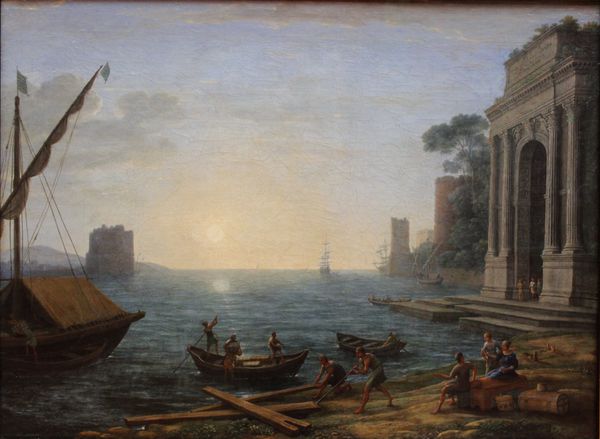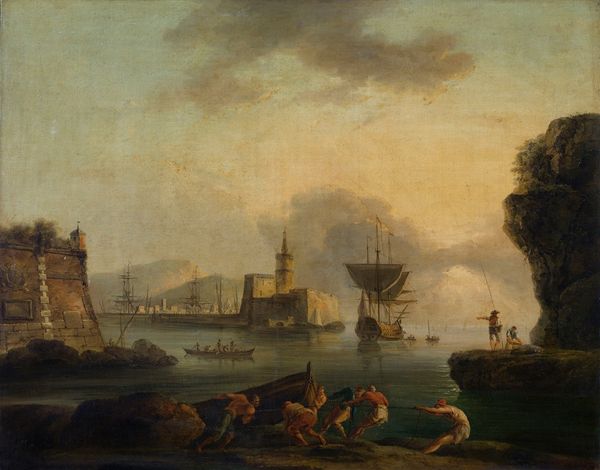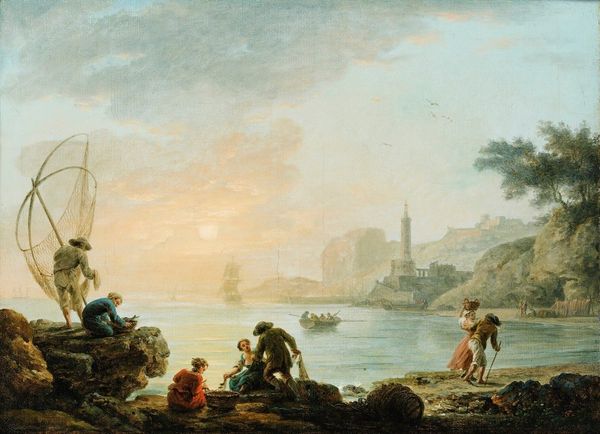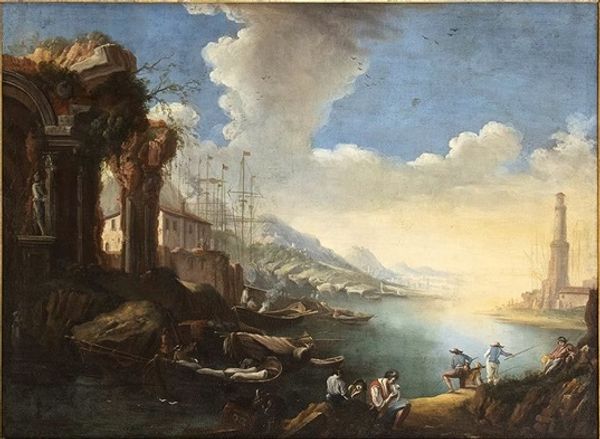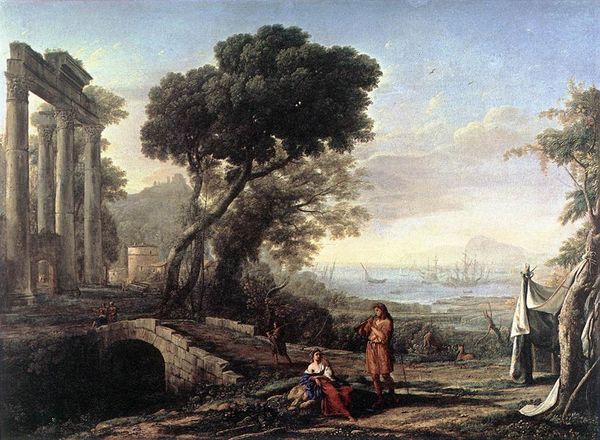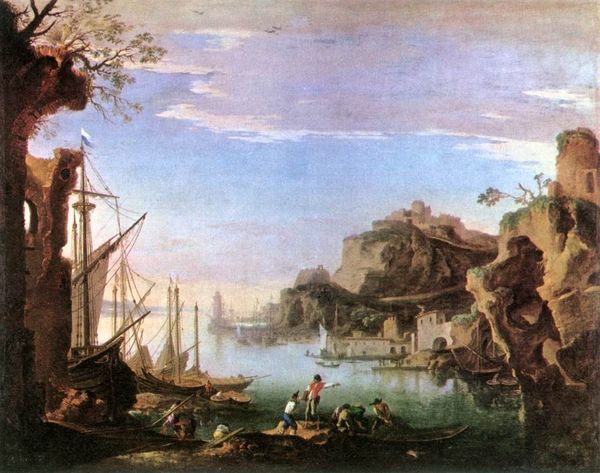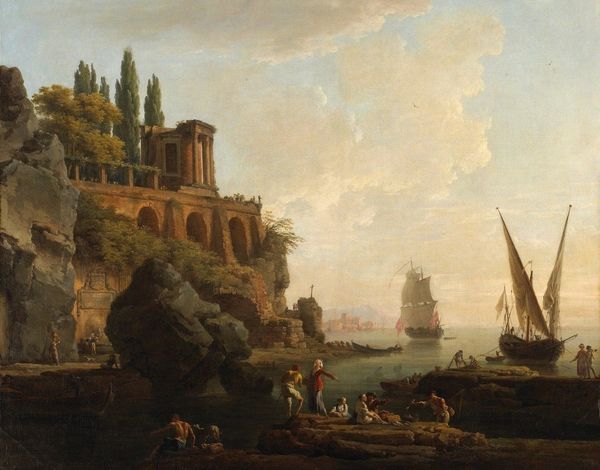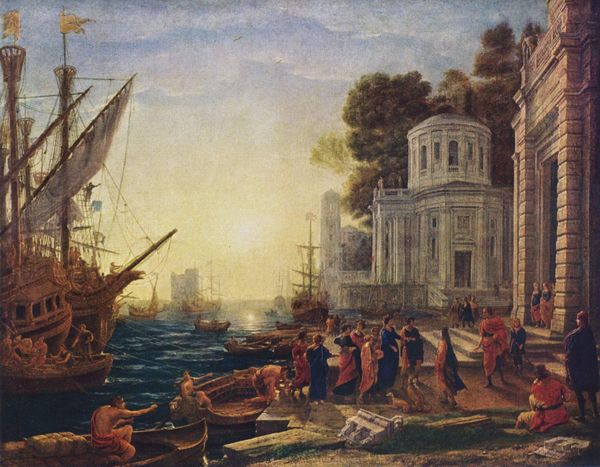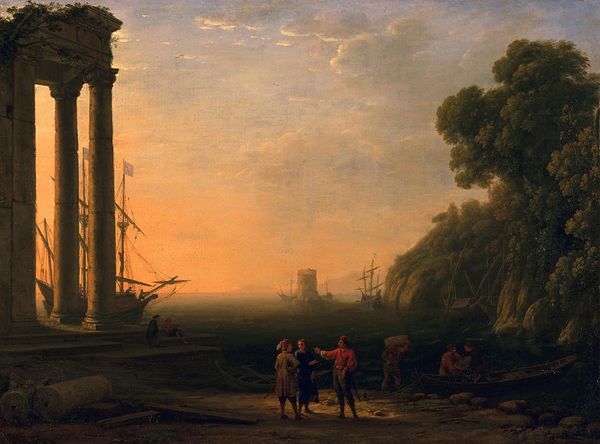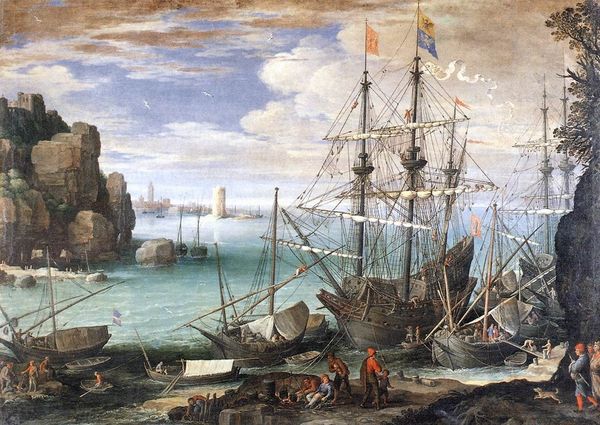
painting, plein-air, oil-paint
#
baroque
#
painting
#
plein-air
#
oil-paint
#
landscape
#
classical-realism
#
form
#
cityscape
#
history-painting
#
realism
Dimensions: 97 x 119 cm
Copyright: Public domain
Curator: This is Claude Lorrain's "Port at Sunset," painted in 1649. You can currently find it at the Hermitage Museum in St. Petersburg. Editor: It's overwhelmingly golden! A serene and perhaps even theatrical landscape with that radiating sun dominating the visual space. The contrast between light and shadow is exquisite. Curator: Lorrain, steeped in the Baroque tradition, used the play of light and shadow to define form, guiding the viewer’s eye across the canvas. Look at how the architectural elements on the right—the archway—echo the forms in the distant fortifications, framing the sun's luminescence. The figures in the foreground act more as staffage, you see, arranged to complement the composition. Editor: Ah, but those aren’t just picturesque figures. Look at the activity! There's commerce, and what looks like travel or embarkation. Doesn’t the port become more than just aesthetic pleasure? Considering the tumultuous backdrop of 17th century Europe, the rise of empires, I wonder if Lorrain is subtly commenting on internationalism, using the landscape as a stage to showcase global exchange? Curator: While historical context undoubtedly enriches our understanding, I’m drawn more to Lorrain’s meticulous control over spatial recession. He deliberately placed elements – the ships, the distant structures – to achieve a gradual diminuition of size. This perspective control isn’t just imitation; it's a strategic deployment to create depth. It reinforces a visual experience that moves your focus to form rather than necessarily narrative. Editor: Agreed. Though, his style shaped how Europe perceived landscape painting from that point on. And to consider, that back then there were powerful merchants investing a lot in trade... this type of scene served the status quo; that type of social environment wanted a romantic representation that makes them feel powerful. It also helped them imagine themselves as more educated in visual and liberal arts. Curator: That's definitely part of the overall interpretation and perception! In its architectural design, the structures exhibit verticality. Then there is also linearity shown with how it's built on the coast. With all this is there not a more sophisticated reading in that direction? Editor: It does look like his painting presents various perspectives to discuss at length! I hadn't observed how well he uses the horizontal orientation there as a frame until now.
Comments
No comments
Be the first to comment and join the conversation on the ultimate creative platform.
